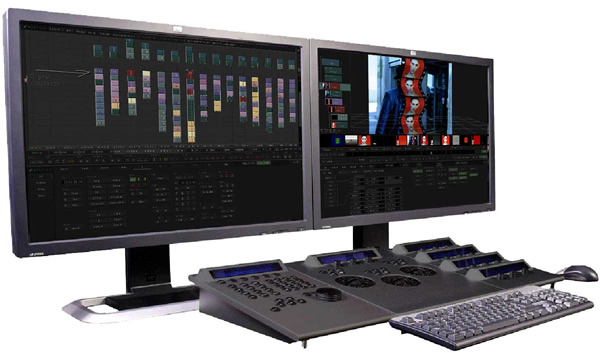News
Color correction news at NAB
In addition to the specific posts we did last week about Nucoda, DaVinci Resolve 11 or SpeedGrade, here is another summary of some of the color correction news announced during NAB.
Quantel Pablo Rio
Quantel decided to adapt to a wider variety of workflows by adding more media and extending some of its existing features in its Pablo Rio system:
- Avid effects conforming.
- 4K XAVC export.
- DCP import.
- RED SDK support.
- License to encode to the ProRes family of codecs (4444, 422 HQ, 422, 422 LT and 422 Proxy).
In addition, Optical Flow has been incorporated for better slow (or fast) motion effects, the ability to mount HD AVC files (.mts), audio in multi-layer timelines, and the implementation of Mocha Tracker data has been improved.
SGO Mistika
Mistika version 8.2 will come with the new “Spatial Isolation” toolset.
This new feature allows working from color correction with all the information of 3D objects associated to an image and generated in different systems. Generally in these processes, when we reach the final stages of production, all the information regarding masks, object IDs, position changes, mattes and (in the case of s3D) depth maps, has been lost. Now, thanks to Spatial Isolation we will be able to manipulate each object independently, selecting any of them or any of their parts and combining traditional isolation modes with masks or color and luminance ranges.
Spatial Isolation does not offer compositing possibilities, but is used to perform blur, lighting and color manipulations from the Mistika color correction window.
- Directional Relighting (pick direction)
Uses the “Surface Normals” layer of an EXR source clip to simulate directional lighting within a 3D environment.
- Localised Positional Relighting (pick position)
Uses the “XYZ Position” layer of an EXR source clip to generate color selections or alpha channels that simulate localized positional lighting within 3D space.
- Object Selection (pick object)
Use the “Object ID” or “Material ID” layers of an EXR source clip to generate clean, precise color selections or alpha channels that specifically isolate individual CGI objects.
- Stereo Depth Selection (pick depth)
Generates color selections and alpha channels that allow color correction and other effects to be applied locally within a plane of reduced depth, or variably within the depth of an s3D scene.
Colorfront
Colorfront, developer of systems for dailies creation and transcoding, announced Colorfront Engine, which allows the creation of looks on set and ensures the color of the images until post-production.
Colorfront Engine has been integrated into all of the company’s tools and services, from On-Set Live to On-Set Dailies, Express Dailies, the new Transkoder OSD and Colorfront Cloud services.
It is fully ACES compliant and supports 10-bit and 12-bit display via SDI and HDMI, as well as HD, UHD and 4K monitoring, with embedded multi-channel audio.
These are its characteristics:
- Display Calibration Toolset: using X-Rite i1 and i1 Display Pro to measure, calibrate and test computer monitors, video monitors, projectors and iPads.
- Camera Color: is a new set of color tools that unifies color from multiple cameras with functions such as exposure, color temperature controls and auto white-balance.
- Look Blender: is unique to Colorfront Engine and allows creative blending of looks to arrive at a unique style while protecting the integrity of the original material. Whether it’s the new Master Look, a film emulation, print bleach simulation, a vintage look, or ACES RRT, Look Blender combines multiple looks to achieve the desired look for each project.
- Master Looks: includes color transformations that have been specifically designed for mastering the latest digital cameras, such as Rec709, DCI P3, Rec2020 and ACES. It also works with 4K.
- HDR Mastering: provides the best possible look on HDR (High Dynamic Range) devices, including Dolby Vision. Colorfront Engine’s 32-bit floating point (per channel) precision protects image detail and quality while mastering.
- Colorfront UltraScaler: using Colorfront’s image science, this tool allows you to scale HD images to UltraHD and 4K. It uses GPU processing.
- Dynamic Expander: takes the normal color and dynamic range and expands them into wider color spaces or higher ranges, remastering to P3 or Rec2020, for example.
- A variety of essential image analysis tools have also been included: waveform, vectorscope, histogram and 3D color.
LightSpace CMS
Light Illusion announced the full integration of its LightSpace CMS (color management system) with the Dolby Professional Reference line of monitors, specifically with the PRM4200 and PRM4220 models. This provides users with the ability to calibrate displays and perform automatic profiling, ensuring accurate results.
A network interface manages the loading of LUTs directly from LightSpace CMS to avoid errors during the profiling and calibration processes.
Dolby also plans to incorporate LightSpace CMS as part of a suite of tools for display installation and re-calibration work.







